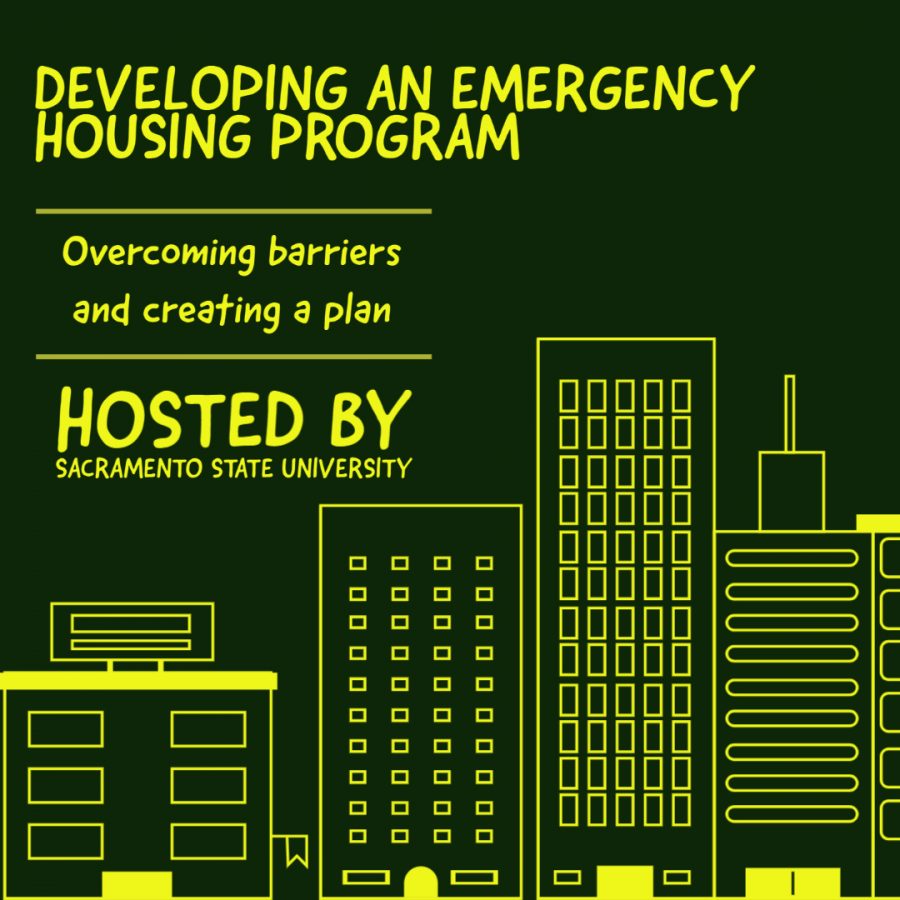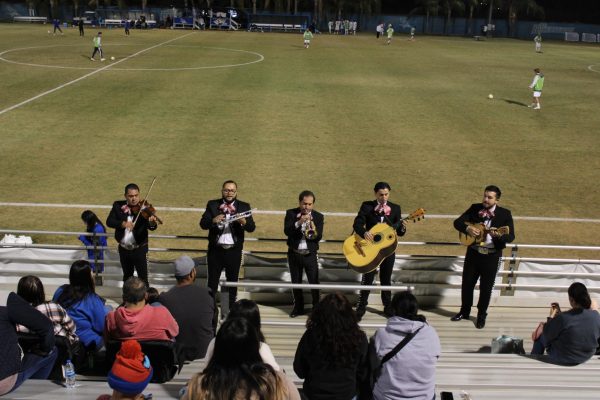Establishing emergency assistance: Sacramento State holds “Emergency Housing Program: Creation and Development Process” webinar
November 30, 2020
In recognition of “Hunger and Homelessness Week,” Sacramento State (SSU) hosted “Emergency Housing Program: Creation and Development Process” on Nov. 18 for CSU students and faculty to attend via Zoom.
The event’s registration form described the event as being “designed for any college campus exploring the development of an emergency housing program.”
SSU specifically designed the webinar to help universities plan for CSU college students that need short-term housing arrangements.
The event’s featured guests that joined the webinar to discuss SSU’s emergency housing program including SSU’s Ed Mills, Vice President for Student Affairs, Samuel Jones, Executive Director of University Housing, and Danielle Muñoz, CARES (Crisis Assistance & Resource Education Support) Office Case Manager.
The topics covered in the webinar included “funding sources, staffing structures, risk assessment, and implementation” according to the registration form.
The webinar allowed for a Q&A portion, but only a handful of questions were answered due to time constraints. There was an assigned moderator, who read the submitted questions with the featured guests during the last few minutes of the event.
Mills kicked off the discussions by demonstrating why colleges should offer emergency housing for students, and why colleges should consider committing the university’s time, resources, and funding to help.
Mills said that it is SSU’s mission to “transform students’ lives by preparing them for leadership service and success, if we are not supporting them as whole students, if we do not look at our student body as a wholistic perspective we can’t serve our mission. It isn’t just about one aspect it is about all aspects.”
Mills also said that this ultimately made the decision for providing the emergency housing program an easy one.
He commented that the long-term goal for the program would be that “none of our students experience homelessness while they are in school. That is the vision; that is the nirvana.”
Mills also shared that these types of housing programs are worth institutionalizing because it’s a “service that is so integral to health and well-being [of] your student body.”
Jones, the second guest, explained how SSU’s housing program worked, and its accessibility for students on campus.
Students who are looking to enter the program, must fill out an application and will be notified through a same day approval system.
Jones explained that the emergency housing program that they offer at SSU is 30 days of housing to any student experiencing homelessness, despite factors that may have attributed to their current state. If a student is unable to find housing within the 30 days, they may ask for an extension.
All of the days that the student can stay are totally up to the discretion of the CARES office. […] If a student needs to stay longer than that, we allow for that.”
He shared that the program also uses “conference supplies to assist the students: bedding, lamps, refrigerator, toiletries, etc.,” Jones said.
Jones stated the main goal of the program is to ensure that students are provided with the basic necessities to ensure they don’t need anything. This can include financial help, employment, counseling, and dinning services or Cal-fresh among additional help to assist students.
Muñoz was the last featured guest to speak about the emergency housing program at SSU. Muñoz explained that her department is where students experiencing homelessness go to seek and are offered help temporary housing.
Muñoz credited the CARES Office for essentially being the “one that helped create the emergency housing program and dining services” as well as the ones responsible for the intake.
Muñoz shared the various factors that have put students in the unfortunate circumstance of homelessness. She emphasized that the program is focused on student success and make sure students keep up with the guidelines of emergency housing.
Muñoz said the service operates with principles including: accessibility, equitability, trauma-informed, solution-informed, low-barrier, holistic care, safety, trustworthiness and transparency, peer support, collaboration and mutuality, empowerment and choice, cultural, historical and gender issues.
Not only does the program provide housing and basic necessities, but it also helps students with any underlying issues that may have led to becoming homeless.
Muñoz said that some of the factors that often leads to homelessness includes family/domestic violence, mental health challenges, cut off by family due to their sexual identity, health/safety issues in the home, natural disasters, or systemic poverty.
SSU’s overall message throughout the webinar was to inform those attending why CSU campuses should consider an emergency housing program. Through their learned practices with the program, they are able to advise and help campuses that that are wanting to expand their help to the student body.
Muñoz said that they would be following up with those who attended the event with a copy of the webinar, as well as a PowerPoint presentation and manual to help those interested in getting an emergency housing program started on their campus. All attendees should expect to receive their copy in the email provided during registration.







